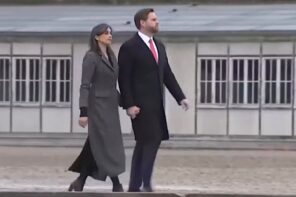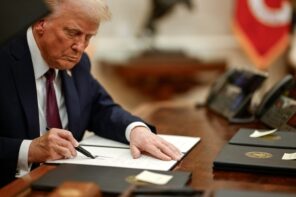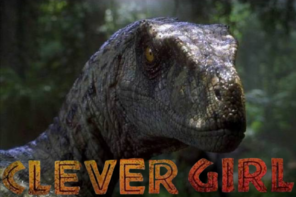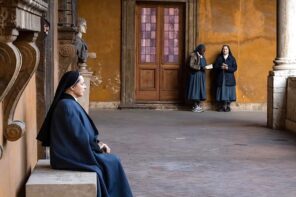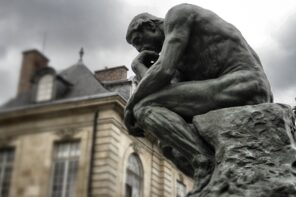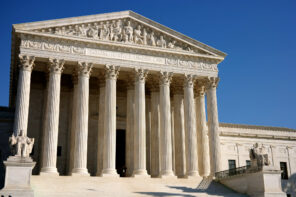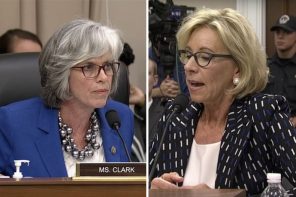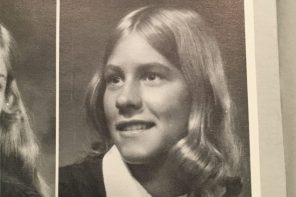Since its inception in 1867, Morehouse College is noted as the bastion of black male leadership; embodying W.E.B. Dubois’ theory of The Talented Tenth, where “exceptional black men” would be the ones to lead the race. Morehouse has unquestionably produced a pantheon of noted black men.
However—in its development of a strong, black, elite brotherhood—nowhere in its history were gay, and bisexual men included. And now, more than a century later, gay and bisexual Morehouse men are still struggling to be accepted.
Michael Brewer, a senior at Morehouse is trying to help the college foster a more welcoming environment, but many of his efforts on campus fall on deaf ears. LGBTQ activists are listening and so too is the Los Angeles Times with its recent article Morehouse College faces its own bias —against gays.
With more and more students of Brewer’s generation arriving on campus openly gay or bisexual, Morehouse’s administration continues to lack the cultural competence and sensitivity to address the issue, leaving students with only one option for how to be a Morehouse man.
Devrin Lindsay, a junior, told the Los Angeles Times that an effeminate man who “swishes down the campus like he’s on a runway” damages Morehouse’s image for parents with kids looking to attend the college.
But it is Morehouse’s highly publicized 2002 gay-bashing incident that has damaged its image, and has, sadly, taught the administration very little.
On November 4, 2002, a Morehouse College student sustained a fractured skull from his classmate, sophomore Aaron Price; not surprisingly the son of an ultra-conservative minister. Price repeatedly hit Gregory Love on the head with a baseball bat for allegedly looking at him in the shower.
According to the Atlanta Journal-Constitution, Love did not have his glasses on, allegedly peering through the shower curtain to see whether or not it was his roommate. Unfortunately for Love it was Aaron Price in the shower.
But many on Morehouse’s campus felt then and do now that peering in a student’s shower is an act that not only transgresses Price’s privacy as a man, but also warrants some form of brute retaliation as an affirmation of his manhood. “A lot of people believe that he deserved to get beaten up if he was looking in the shower stall. Students are very wary of any action that could be misconstrued as a gay overture,” sophomore Mubarak Guy, who is a friend of Price’s, told the AJC in 2002.
During the arguments for and against convicting Price of the state’s first hate crime, Assistant Fulton County District Attorney Holly Hughes asked the jury to remember the words Price allegedly uttered “when he beat his victim with a baseball bat: ‘Faggot, you’re gay, gay … I hate these Morehouse faggots.’”
Morehouse is lauded as the jewel of black academia. Founded two years after the end of the Civil War by William Jefferson White in the basement of Springfield Baptist Church in Augusta, Ga., Morehouse’s most famous alumnus is the Rev. Dr. Martin Luther King Jr., who graduated in 1948 with a BA in sociology.
But King had his own problems with gay men.
Sadly, Bayard Rustin, the gay man who was chief organizer and strategist for the 1963 March on Washington that further catapulted King onto the world stage, was not the beneficiary of King’s dream.
In a spring 1987 interview with “Open Hands,” a resource for ministries affirming the diversity of human sexuality, Rustin stated that he pushed King to speak up on his behalf, but King did not. In John D’Emilo’s book “Lost Prophet: The Life and Times of Bayard Rustin,” D’Emilo wrote: “Rustin offered to resign in the hope that he would force the issue. Much to his chagrin, King did not reject the offer. At the time, King was also involved in a major challenge to the conservative leadership of the National Baptist Convention, and one of his ministerial lieutenants in the fight was also gay. Basically, King said, ‘I can’t take on two queers at one time.’”
Price was sentenced to 10 years in prison, expressing no emotion as the guilty verdict was read.
Despite the fact that Walter Massey, then-president of Morehouse noted, in a campus-wide address that, “homophobia is not a new topic at Morehouse,” little has changed. After the 2002 beating, gay students formed a support group, Safe Space, which Brewer belongs to. Unfortunately, the group’s total membership this year included only about five active students.
In the ’80s and ’90s it was more dangerous to be openly gay and bisexual on Morehouse’s campus than it was on the streets of black neighborhoods.
Jafari Sinclaire Allen, a professor at University of Texas was an openly gay student at Morehouse in the late 1980s and early 1990s. He recalls fleeing campus one evening after a forum designed to address homophobia turned violently homophobic. Unsurprisingly, perhaps, Morehouse was listed on the Princeton Review’s top 20 homophobic campuses throughout the 1990s.
But homophobic incidents at Morehouse speak to a larger issue plaguing men of African descent in this country—acknowledging their sexuality.
With the dominant culture’s iconography of black male sexuality ranging from sexual predator to pornographic object, both the dominant heterosexual and the gay culture’s fear and fascination with black male sexuality may satisfy racist paranoid fantasies, but also strips men of African descent of both their possession of their sexuality as well as the language to safely express it.
Gay white Photographer Robert Mapplethorpe’s notorious “Man in a Polyester Suit” maintains the stereotypical convention of black male sexuality as a monstrous phallus that is dangerous, out of control and animalistic. The gay white male photographer’s focus on a black uncircumcised penis protruding from an unzipped pair of polyester pants reasserts the mythology of the super-sexualized black man.
Many African-American men on the “down low”(DL) say there are two salient features that contribute to their subculture—white gay culture and the Black Church. DL men deliberately segregate themselves from both black and white gay cultures as an alternative black masculinity that only wants to have sex and socialize with other black men. But class is a factor here, too. While many gay African-American men have the economic mobility to reside outside of the black community and are likely to intermingle with the dominant gay culture, most DL men don’t.
“They’ve created a community of their own, a cultural party where whites aren’t invited. Labeling yourself as DL is a way to disassociate from everything white and upper class… And that is a way for DL men to assert some power,” George Ayala, director of education for AIDS Project Los Angeles, told the Times in the 2003 article.
The Black Church’s gender ideology and sexual politics also contribute to this subculture. A study by the Pew Forum on Religion and Public Life indicated that African-American churchgoers are the least likely of all faiths to support gay civil rights. The Forum also indicated that since 2006, black Protestants are less likely than other Protestant groups to believe that gays should have equal rights. For example, black Protestant support for gays dipped to a low of 40 percent last year, down from 65 percent in 1996 and 59 percent in 1992.
With homophobia running as rampant in historically black colleges and universities as it is in black churches, there are no safe places to openly engage the subject of black sexuality. With sexuality being both socially constructed and performative, black male sexuality becomes a caricature of itself that is heavily imprinted in society. Black, gay sexuality within African-American culture is perceived to further threaten not only black male heterosexuality, but also the ontology of blackness itself.
“If you look historically at what black males were subjected to in the white community, to hear a black male saying he’s gay goes against the grain of society’s picture,” said Florence Bonner, head of the sociology department at Howard University in Washington, DC, another HBCU. “The African-American community suffers from not having enough outlets for cross connection, or for all of us in general to talk about sexuality and the impact of living in fear of stating your sexuality.”
As the nation’s largest liberal arts college for men, Morehouse continues to confer degrees on more men of African descent than any institution of higher education in this country.
Although Morehouse has always had a vibrant underground gay community, Morehouse has carefully crafted its image as an institution that produces strong men of African descent. And part of its crafted image is the legacy of the strong Morehouse man who is unquestionably heterosexual.
If Morehouse is to continue to be the jewel of black academia nurturing the talents and gifts of its exceptional black men it must ask itself: To what degree does its tradition hinder its goal?
